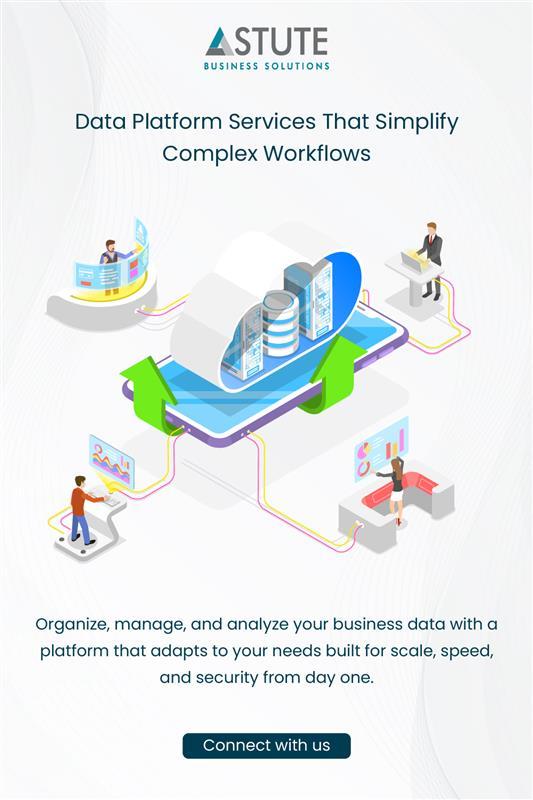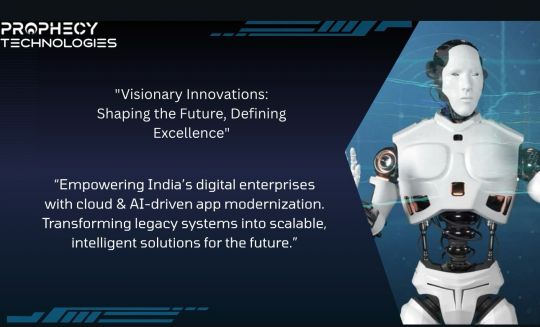#ai and cloud modernization
Explore tagged Tumblr posts
Text
Dunedin City Council Partners with HCLTech for 10-Year Digital Transformation
HCLTech has entered a landmark 10-year strategic partnership with the Dunedin City Council (DCC) to lead a comprehensive digital transformation of its IT services. The collaboration aims to modernize and manage DCC’s digital infrastructure, enhance service delivery, and boost community engagement through cutting-edge technology. As part of the deal, HCLTech will revamp the Council’s IT services…

View On WordPress
#ai and cloud modernization#ai automation tools#ai in government#apac tech trends#automation in governance#cloud infrastructure#cybersecurity solutions#digital transformation 2025#dunedin city council#dunedin digital transformation#government digital strategy#govtech partnership#hcl bse#hcl cloud services#hcl DII holding#hcl dividend#hcl engineering services#hcl FII holding#hcl fundamental analysis#hcl investments#hcl it services#hcl long term investment#hcl market cap#hcl net profit#hcl nse#hcl outsourcing#hcl PE ratio#hcl revenue#hcl share forecast#hcl share price
0 notes
Text

Heaven’s light carved into the darkness
#cyberpunk aesthetic#artwork#digital art#illustration#cybercore#cyberpunk 2077#artists on tumblr#futuristic#techcore#digitalart#digital illustration#digital painting#art#the amazing digital circus#ai art#ai artwork#ai generated#scifiart#scifi#surreal#masterpiece#dystopia#modern art#my art#drawings#sky#clouds#sundown#skyscape#night
28 notes
·
View notes
Text

'I like it when a photo absorbs more than a fraction of a second, I like to remember what I was thinking about whilst it was produced'
#black and white photography#bwphotography#photographers on tumblr#black and white#bw edit#photography#architectdesign#original photographers#architecture#pentax#brutalist architecture#modern architecture#black and white architecture#long exposure photography#long exposure#30 second exposure challenge#clouds#fine art photography#fine art#fine as hell#urban noir#fuck ai everything#fuck ai all my homies hate ai
21 notes
·
View notes
Text
i mean i get the point but chatgpt n other similar ai tools are not some inherent evil they're firstly new technology like yh sure u wldnt want these ppl depending on it but i eld expect my college professors n classmates to at least kno what it is n myb have even tried it out like it is a new technology i'd also expect them to have a critical approach to it n using it isn't immediately equal to not having a critical approach it's literally like when google wldve become popular n ypu wldve had the same types of ppl tlking abt omg they asked google n not an encyclopedia how many times have u asked a parent or teacher or similar figure smth n they said just Google it did u think tht google had the correct answer undoubtedly too?
#cloud nonsense#like get over urselves a bit#i thought it was what i was paying for when my lecturer showed us how#the Microsoft ai cld be used#n how it cldnt be used#he's a span professor but at least ik he's staying au coursnt with modern strategies n tools#i think thts important? esp in academia?#idk just me whatever
3 notes
·
View notes
Text
10 Ways Technology is Boosting Workplace Productivity
In the contemporary professional landscape, productivity is the currency of success. Businesses and individuals alike are constantly seeking innovative strategies to optimize output, streamline workflows, and maximize efficiency. At the forefront of this revolution is technology, which has fundamentally transformed how we work, collaborate, and manage our time. Far from being a mere convenience,…
#AI in Workplace#artificial intelligence#automation#business efficiency#Business Growth#Business Intelligence#Business Management#Business Solutions#Business Technology#cloud computing#Collaboration Tools#cybersecurity#data analytics#Data-Driven Decisions#Digital Collaboration#Digital Document Management#digital tools#digital transformation#Digital Workplace#Efficiency Tools#Employee Efficiency#Employee Engagement Technology#Employee Training Platforms#Enterprise Software#future of work#Hybrid Work#machine learning#Mobile Productivity#Modern Workplace#Office Technology
1 note
·
View note
Text
Agentforce CRM vs. Legacy Systems: Why AI-Powered CRM Is the Future of Sales and Support

If your team still relies on legacy CRM systems for managing customer relationships, chances are, they’re struggling with slow processes, disconnected channels, and repetitive manual tasks. What worked 10 years ago simply isn’t enough in 2025. That’s why more companies are switching to Agentforce AI CRM software—an advanced solution designed to deliver AI-powered sales automation and AI-driven customer service tools that legacy systems simply can’t match.
Here’s the reality: manual lead scoring and traditional support ticketing slow down business. Agentforce CRM services, powered by Salesforce integration services, eliminate these outdated methods. With intelligent virtual assistants, automated sales workflows, and predictive customer behavior analysis, sales teams can close deals faster, and support agents can resolve issues in real time.
Unlike legacy platforms, Agentforce AI CRM software doesn’t just store data—it actively learns from it. For example, retail businesses can use Salesforce Health Cloud services for customer insights, while finance companies benefit from predictive lead scoring automation built into AI CRM software. Even industries like healthcare and manufacturing now rely on automation for customer service across multiple channels to handle inquiries via chat, email, voice, and social platforms.
The shift is simple: businesses today demand faster service, personalized sales journeys, and smarter systems. GetOnCRM’s Agentforce CRM services help companies make that shift, combining Salesforce Service Cloud services with AI-powered CRM tools that are scalable and future-ready.
If your sales and support teams continue to rely on manual processes and fragmented platforms, it's time to upgrade.
Are you curious about how Agentforce CRM surpasses legacy systems? read the blog.
#agentforce ai crm vs legacy crm systems#ai-powered crm software for sales and support#smarter crm automation with agentforce crm#salesforce integration services for ai crm#best crm automation tools for modern businesses#salesforce health cloud services provider#omnichannel customer service automation crm#predictive lead scoring automation with agentforce#getoncrm agentforce crm services
0 notes
Text

Secure Your Data with Oracle Modern Data Platform
Astute Business Solutions offers modern data platform services powered by Oracle—helping businesses unify their data, automate processes and drive real-time insights. From AI-powered analytics to secure multi-cloud deployments, this is data management, redefined. Discover how a modern data platform can power your business success—visit our website.
0 notes
Text
Revolutionize Your Receivables with Atcuality’s Collection Platform
Struggling with outdated manual collection processes? Atcuality’s comprehensive cash collection application provides everything your business needs to streamline payment collection and reconciliation. Our feature-rich platform supports real-time monitoring, customizable workflows, multi-currency support, and advanced security features. Designed to empower field agents and finance managers alike, our application reduces operational overhead while improving transparency and accountability. Seamless integration with ERP systems ensures smooth data flow across your organization. From retail networks to field services and utility providers, businesses trust Atcuality to simplify collections and boost cash flow. Partner with us to modernize your operations, improve customer satisfaction, and drive sustainable growth. Experience digital transformation with Atcuality.
#seo marketing#digital marketing#artificial intelligence#iot applications#seo agency#seo services#azure cloud services#seo company#amazon web services#ai powered application#cash collection application#software engineering#software testing#software company#software services#information technology#software development#technology#software#software consulting#applications#application development#mobile application development#ai applications#application security#application modernization#application process#application services#app design#app developers
1 note
·
View note
Text
Cisco Research Highlights Major Infrastructure Shift with AI Integration
Cisco’s AI-Powered Network Revolution: Transforming Infrastructure for the Future
In a rapidly evolving technological landscape, Cisco is spearheading a major transformation in network infrastructure through AI integration. Unlike conventional AI applications that focus on consumer products or software automation, Cisco’s approach revolves around building an “AI-native infrastructure” designed to meet the complex demands of enterprise networks and next-gen AI workloads. This shift is not just a technological upgrade but a strategic move to redefine how businesses operate, secure their data, and deliver seamless digital experiences worldwide. This article explores Cisco’s vision, innovations, and the broad impact of this infrastructure revolution.
Table of Contents
Redefining Network Architecture with AI-Native Foundations
AI-Driven Security: Protecting the Future of Enterprise Networks
Enhancing Network Visibility and Automation Through AI Operations
Cisco’s AI Infrastructure Investment
Empowering Businesses and Communities Worldwide
The Path Forward for AI-Enabled Infrastructure
Quotes:
FAQs:
Redefining Network Architecture with AI-Native Foundations
Cisco’s groundbreaking research highlights the urgency of rebuilding network infrastructure to support the exponential growth of AI, IoT, and cloud applications. Rather than merely adding AI tools on top of existing systems, Cisco is pioneering networks architected from the ground up to handle the intense compute, bandwidth, and latency requirements of AI workloads. This includes the development of custom Ethernet fabrics optimized for AI/ML clusters using NVIDIA and AMD GPUs, enabling faster data throughput and real-time analytics.

The initiative began as early as 2023 when Cisco started investing heavily in research and partnerships aimed at designing hardware and software ecosystems that would not only support but accelerate AI adoption. By 2025, Cisco publicly launched a suite of AI-native network products, showcasing how networks can dynamically adapt to data flows, improve reliability, and automate routine tasks.
This architecture matters because traditional networks struggle under the weight of modern AI and cloud demands, often causing bottlenecks and security vulnerabilities. Cisco’s AI-native infrastructure aims to eliminate these challenges by offering scalability, resilience, and intelligent automation, which in turn drives business efficiency and innovation.
AI-Driven Security: Protecting the Future of Enterprise Networks
Security is a core pillar of Cisco’s AI strategy. As cyber threats grow increasingly sophisticated, Cisco leverages AI and machine learning to detect anomalies, prevent breaches, and analyze encrypted traffic without compromising privacy. Their AI-powered security platforms use behavioral analysis to identify threats that traditional systems might miss and enable automatic remediation, reducing response times drastically.
Cisco introduced this integrated security approach alongside their AI-native infrastructure, positioning it as an essential tool for enterprises transitioning to hybrid and multi-cloud environments. This strategy aligns with Cisco’s Zero Trust architecture, which assumes breaches will happen and continuously validates every device and user.
This AI-empowered security not only protects sensitive data but also ensures business continuity, making it a critical enabler for companies worldwide to embrace digital transformation with confidence. It is particularly beneficial for industries like finance, healthcare, and government sectors where data protection is paramount.
Read More : Cisco Research Highlights Major Infrastructure Shift with AI Integration
#Cisco#AI integration#network infrastructure#artificial intelligence#enterprise networks#AI-powered security#digital transformation#cloud computing#IoT#AI operations#network automation#cybersecurity#tech innovation#IT infrastructure#machine learning#predictive analytics#global connectivity#infrastructure modernization#AI in business#future of networking
0 notes
Text
Migrating Legacy Contact Centers to Smart AI Solutions

Introduction
In an era dominated by digital transformation, businesses are rapidly shifting from traditional, on-premise contact center systems to smart, AI-powered platforms. This migration is not merely a trend—it’s a strategic imperative. Legacy contact centers, while once reliable, often struggle to keep up with the demands of modern customers who expect seamless, real-time, omnichannel support. Smart AI solutions offer a scalable, efficient, and intelligent approach to managing customer interactions while significantly improving the overall customer experience (CX).
Why Legacy Contact Centers Fall Short
Legacy contact centers were built to handle voice calls through physical infrastructure and manual workflows. These systems are rigid, expensive to maintain, and lack the flexibility needed for today’s fast-paced digital environment. Some key limitations include:
Limited scalability
High operational costs
Minimal integration with digital channels
Lack of real-time data analytics
Inability to support remote agents effectively
Moreover, legacy systems are often siloed, making it difficult to provide a unified customer experience across channels such as email, chat, social media, and messaging apps.
The Case for AI-Powered Contact Centers
AI contact centers leverage technologies like machine learning, natural language processing (NLP), and robotic process automation (RPA) to enhance and automate customer interactions. These platforms can intelligently route queries, provide self-service options, and analyze customer sentiment in real time.
Key benefits of migrating to a smart AI solution include:
Enhanced customer experience (CX) with personalized, context-aware interactions
24/7 availability through AI-powered virtual agents and chatbots
Omnichannel support that unifies communication across voice, email, chat, SMS, and social platforms
Cost savings through intelligent automation and reduced reliance on live agents
AI-driven analytics for better decision-making and performance optimization
Key Technologies Powering Smart AI Contact Centers
Natural Language Processing (NLP) NLP enables AI to understand and respond to human language more effectively. It powers chatbots, virtual assistants, and intelligent IVRs, making interactions more human-like and intuitive.
Machine Learning and Predictive Analytics Machine learning models analyze historical data to predict customer behavior, enabling proactive service and intelligent routing of interactions to the right agents or systems.
AI-Driven Automation Robotic process automation (RPA) handles repetitive tasks such as data entry, verification, and ticket generation, allowing agents to focus on complex issues.
Cloud-Based Infrastructure Modern AI contact centers are built on the cloud, enabling easy scalability, remote agent support, and seamless updates without downtime.
Speech Recognition and Sentiment Analysis These tools analyze tone and emotion during voice interactions, helping organizations adapt responses in real time to improve outcomes.
The Migration Journey: Key Steps and Best Practices
Migrating to a smart AI contact center requires strategic planning and execution. Here’s a high-level roadmap:
1. Assess Your Current State
Begin with a comprehensive audit of your existing contact center infrastructure, workflows, customer pain points, and technology stack. Identify gaps in CX, agent productivity, and system performance.
2. Define Your Objectives
Clearly define your goals—whether it's improving response times, enabling omnichannel support, or reducing costs through automation. These objectives will guide technology selection and implementation strategy.
3. Choose the Right AI Contact Center Platform
Look for platforms that offer:
Seamless cloud migration
Integration with your existing CRM and support systems
AI-powered virtual agents and intelligent routing
Real-time dashboards and AI-driven analytics
Security and compliance features
Top vendors include Amazon Connect, Google Cloud Contact Center AI, Genesys Cloud, and Five9.
4. Plan for Integration and Data Migration
Ensure that customer data, interaction history, and knowledge bases are migrated securely and accurately. APIs and middleware tools can help integrate legacy systems during the transition phase.
5. Train AI Models and Agents
Leverage historical interaction data to train your virtual assistants and automation tools. Concurrently, provide your human agents with training on new tools and AI-assisted workflows.
6. Monitor, Optimize, and Iterate
Post-migration, continuously monitor system performance, customer feedback, and agent productivity. Use AI-driven analytics to identify areas for improvement and adapt quickly.
Addressing Common Challenges
Data Privacy and Compliance: Ensure your new platform adheres to regulations such as GDPR, HIPAA, or PCI-DSS. AI systems should handle sensitive information responsibly.
Change Management: Prepare your team for the cultural shift. AI is meant to augment—not replace—human agents. Empower them with AI tools to work more efficiently.
Integration Complexity: Work with experienced technology partners or consultants who specialize in cloud migration and AI implementation to reduce friction during integration.
Real-World Impact: AI in Action
A leading telecom company replaced its legacy call center with a cloud-based AI solution. The results included:
35% reduction in average handling time (AHT)
50% increase in first contact resolution (FCR)
40% improvement in customer satisfaction (CSAT)
60% of queries handled by AI-powered virtual agents
This transformation not only enhanced operational efficiency but also empowered agents with real-time insights and support tools, allowing them to focus on high-value interactions.
The Future of AI Contact Centers
As generative AI and real-time voice synthesis continue to evolve, smart contact centers will become even more sophisticated. We can expect:
Hyper-personalized customer journeys driven by behavioral analytics
Real-time agent assist tools offering prompts and next-best actions
Voice bots with near-human conversational capabilities
Deeper integration with enterprise systems like ERP and sales platforms
The AI contact center is no longer a futuristic concept—it is today’s strategic advantage.
Conclusion
Migrating legacy contact centers to smart AI solutions is a transformative move that enables organizations to meet the demands of today’s digital-first customers. By embracing AI-powered tools, businesses can deliver superior customer experiences, improve operational efficiency, and gain a competitive edge.
This transition, while complex, can be managed effectively with the right strategy, technology, and partners. As AI continues to evolve, the future of customer engagement lies in intelligent, adaptive, and scalable contact center platforms.
#AI contact center#legacy contact center#customer experience (CX)#contact center migration#AI-powered contact center#intelligent automation#cloud contact center#natural language processing (NLP)#AI-driven analytics#omnichannel support#virtual agents#chatbots for contact centers#contact center modernization#machine learning in customer service#contact center cloud migration#smart contact center solutions#customer service automation#speech recognition AI#predictive analytics for CX#digital transformation in customer support
0 notes
Text

Migrate to Oracle Cloud with Zero Upfront Costs: A Cost-Effective Path to Modernization
The era of traditional IT resources has ended as they come with high maintenance costs, resource constraints, and limited agility. This is where Oracle Cloud transforms the game, offering enterprises cost-effective, risk-free roadmap with zero upfront investment.
Oracle Cloud Infrastructure (OCI) is known for its cutting-edge cloud computing capabilities where organizations can seamlessly migrate workloads, optimize performance, and reduce OPEX. It’s a complete infrastructure that’s powered by AI capabilities to help businesses build a future-ready ecosystem at lower costs.
How to Modernize with Oracle Cloud at Minimal Cost?
Leverage Oracle Cloud’s Free Tier: Oracle offers an extensive Cloud Migration program, including free-tier services and promotional credits. This allows businesses to test and deploy workloads in Oracle Cloud Infrastructure (OCI) without any initial financial commitment, making the transition smooth.
Pay-As-You-Go Flexibility for Cost Optimization: Traditional infrastructure demands heavy capital investment. In contrast, Oracle Cloud Computing operates on a pay-as-you-go model—eliminating upfront hardware and licensing costs while providing full scalability to adjust resources based on demand.
Lift-and-Shift with Zero Downtime: INFOLOB’s unique trifold migration methodology enables businesses to move applications and databases with zero downtime and minimal disruption. This ensures business operations continue uninterrupted while modernizing IT infrastructure.
Multi-Layered Security: Oracle’s Cloud Computing environment includes built-in security features such as encryption, identity management, and advanced threat detection—eliminating the need for costly third-party security solutions while ensuring compliance.
Hybrid and Multicloud Flexibility: For enterprises that require a hybrid cloud or multicloud strategy, OCI offers seamless integration with on-premises environments and third-party clouds. This flexibility ensures businesses can transition at their own pace without overspending on unnecessary infrastructure.
Expert-Led Oracle Cloud Migration Assistance: Our dedicated migration experts and partners provide comprehensive assistance, ensuring enterprises move to Oracle Cloud Infrastructure efficiently. This reduces migration complexities and helps businesses achieve faster time-to-value without additional overhead costs.
Migrate to Oracle Cloud and gain end-to-end business benefits, led by INFOLOB cloud experts.
Tags: Oracle Cloud, Oracle Cloud Migration, Oracle Cloud Infrastructure, OCI, Cloud Modernization, Zero Upfront Cost, Cloud Cost Optimization, Pay-as-you-go Cloud, Cloud Flexibility, Cloud Security, AI in Cloud, INFOLOB Cloud Services, Hybrid Cloud, Multicloud Strategy, Lift and Shift Migration, Zero Downtime Migration, Cloud Computing, Cloud Infrastructure as a Service, Cloud Platform as a Service, Cloud Software as a Service, OCI Free Tier, Enterprise Cloud Strategy, Cloud Migration Experts, Future Ready IT, Cloud Transformation, Digital Modernization, Cloud Scalability, Cloud Integration, Risk-Free Cloud Migration, Cloud ROI, Oracle Cloud AI, Trifold Migration Methodology.
For more Info:
Call: +1 (469) 393-0378
Mail: [email protected]
www.infolob.com
#Oracle Cloud#Oracle Cloud Migration#Oracle Cloud Infrastructure#OCI#Cloud Modernization#Zero Upfront Cost#Cloud Cost Optimization#Pay-as-you-go Cloud#Cloud Flexibility#Cloud Security#AI in Cloud#INFOLOB Cloud Services#Hybrid Cloud
1 note
·
View note
Text

https://prophecytechs.com/application-modernization
1 note
·
View note
Text
How a Construction Cost Estimating Service Helps in Risk Management
Risk management is a fundamental aspect of any construction project, as unforeseen challenges can lead to cost overruns, delays, and financial losses. One of the most effective ways to mitigate these risks is through a reliable construction cost estimating service. Accurate cost estimation allows contractors, project managers, and stakeholders to anticipate potential risks, allocate resources wisely, and ensure the financial stability of a project. This article explores how construction cost estimating services contribute to effective risk management and enhance project success.
Understanding Risk in Construction Projects
Construction projects involve multiple uncertainties, from fluctuating material costs to unexpected site conditions. Some of the common risks include:
Financial Risks: Cost overruns due to inaccurate estimates, inflation, or unexpected expenses.
Project Delays: Scheduling issues arising from unforeseen circumstances such as labor shortages or material delivery delays.
Legal and Compliance Risks: Issues related to permits, regulations, and contractual obligations.
Design Changes: Modifications made during the project lifecycle that impact costs and timelines.
Safety and Environmental Risks: Accidents, weather conditions, and environmental regulations affecting project execution.
A well-structured construction cost estimating service helps in identifying, assessing, and mitigating these risks before they escalate into costly problems.
Key Ways Construction Cost Estimating Services Help in Risk Management
1. Enhancing Budget Accuracy
Accurate cost estimates form the foundation of financial planning in construction projects. A reliable estimating service considers material costs, labor expenses, equipment needs, and contingency funds, ensuring that the project budget is realistic. By reducing budget uncertainties, contractors can avoid unexpected financial strain and ensure smoother project execution.
2. Identifying Potential Cost Overruns
A detailed cost estimate highlights potential cost overruns before the project begins. By analyzing past project data and industry trends, an estimating service can pinpoint areas where costs are likely to exceed initial expectations. This proactive approach allows project managers to allocate contingency funds appropriately and prevent financial shortfalls.
3. Facilitating Better Resource Allocation
Efficient resource allocation is crucial for minimizing risks in construction projects. A comprehensive cost estimate helps contractors determine the right amount of materials, labor, and equipment required for each phase of construction. This prevents shortages, reduces waste, and ensures that resources are used optimally.
4. Minimizing Schedule Delays
Delays in construction projects often lead to increased costs and client dissatisfaction. A precise cost estimate incorporates realistic timelines and accounts for potential disruptions such as weather delays, labor shortages, or supply chain issues. This foresight allows project managers to implement contingency plans and minimize schedule disruptions.
5. Supporting Contract Negotiations
A construction cost estimating service provides valuable data that strengthens contract negotiations with suppliers, subcontractors, and clients. By having a well-documented cost breakdown, contractors can negotiate better pricing, prevent disputes, and establish clear financial expectations before the project starts.
6. Mitigating Market Fluctuation Risks
The construction industry is highly susceptible to market fluctuations, including changes in material costs and labor rates. Cost estimating services use predictive analytics and historical data to assess these fluctuations and incorporate them into the project budget. This helps contractors prepare for potential price hikes and avoid last-minute financial setbacks.
7. Ensuring Regulatory Compliance
Legal and regulatory compliance is a critical aspect of risk management in construction. An experienced estimating service considers permit costs, environmental impact fees, safety regulations, and other legal expenses to ensure full compliance with local and national laws. This reduces the risk of fines, project delays, and legal disputes.
8. Providing Contingency Planning
Unexpected expenses are inevitable in construction projects. A cost estimating service factors in contingency budgets to cover unforeseen costs such as design modifications, equipment failures, or sudden labor shortages. Having a contingency plan in place ensures that unexpected challenges do not derail the project’s financial stability.
9. Reducing the Risk of Design Errors
Inaccurate estimates can lead to design errors that require costly rework. Construction cost estimating services utilize advanced tools such as Building Information Modeling (BIM) to detect design inconsistencies before construction begins. Identifying potential errors early in the planning stage prevents costly modifications during execution.
10. Enhancing Decision-Making with Data Analytics
Modern cost estimating services leverage big data analytics and AI-driven tools to provide data-backed insights for better decision-making. By analyzing previous project costs, labor productivity rates, and material price trends, estimators can offer more precise forecasts, helping project managers make informed financial and operational decisions.
The Role of Technology in Risk Management Through Cost Estimating
Technological advancements have further improved the risk management capabilities of construction cost estimating services. Some key innovations include:
AI and Machine Learning: These technologies analyze vast amounts of historical data to identify potential risks and predict cost trends.
Cloud-Based Estimating Software: Enables real-time collaboration, ensuring that all stakeholders have access to up-to-date cost data.
BIM Integration: Enhances accuracy by providing detailed visual representations of the project, reducing design-related risks.
Drones and Remote Sensing: Provide accurate site data, reducing uncertainties related to site conditions and topography.
By integrating these technologies, construction firms can improve estimate accuracy, reduce human errors, and enhance overall risk management strategies.
Conclusion
A reliable construction cost estimating service is a critical tool for risk management in construction projects. By providing accurate cost assessments, identifying potential financial risks, and incorporating contingency planning, these services help contractors avoid costly overruns and delays. Additionally, leveraging modern technology enhances the precision and effectiveness of estimating, making it an indispensable asset for successful project execution. Investing in a professional cost estimating service not only improves financial stability but also ensures that construction projects are completed efficiently, safely, and within budget.
#construction cost estimating service#risk management in construction#accurate cost estimation#cost overrun prevention#construction budgeting#financial risk mitigation#project delays solutions#construction project planning#estimating software#AI in cost estimating#BIM technology#cost estimation accuracy#resource allocation in construction#predictive analytics in estimating#market fluctuations in construction#contract negotiation strategies#contingency planning#regulatory compliance in construction#reducing design errors#construction project efficiency#data-driven estimating#cloud-based estimating tools#subcontractor cost estimation#supplier cost management#construction legal risks#unexpected expenses in construction#estimating service benefits#modern construction estimating#AI-driven construction forecasting#improving construction cost control
0 notes
Text
Top 10 Revolutionary Technologies That Transformed Daily Life
Technology has always been the cornerstone of human progress, shaping how we live, work, and interact. From life-altering communication tools to sustainable transportation solutions, revolutionary technologies have redefined daily life. This blog explores the top 10 revolutionary technologies, their development journeys, and how they’ve impacted modern society. 1. The Smartphone: Redefining…
#3D Printing#AI Advancements#Artificial Intelligence#blockchain technology#Cloud Computing#Digital Transformation#Electric Cars#Future Technology#Internet Development#Modern Innovations#Renewable Energy Solutions#Revolutionary Technologies#Smartphone Evolution#solar energy#Streaming Platforms#Sustainable Living#Tech Revolution#Technology Impact#Wearable Technology
0 notes
Text
What Is the Best Approach to Setting Up a Smart Garage?
As homes become more interconnected and smart devices permeate every corner of daily life, the garage is often overlooked. However, integrating smart technology into your garage can significantly enhance convenience, security, and efficiency. So, what is the best approach to setting up a smart garage? Whether you’re looking to streamline your morning routine or boost the security of your home, a…
#AI garage#app control#automated garage#automated security#cloud technology#connected garage#digital garage#garage automation#garage cameras#garage efficiency#garage innovation#garage monitoring#garage organisation#garage safety#garage sensors#garage setup#garage tech#garage tech trends#garage tools#geofencing#home automation#home security#home upgrade#integrated systems#IoT garage#modern garage#remote access#RFID systems#security systems#smart cameras
0 notes
Text
Dominating the Market with Cloud Power

Explore how leveraging cloud technology can help businesses dominate the market. Learn how cloud power boosts scalability, reduces costs, enhances innovation, and provides a competitive edge in today's digital landscape. Visit now to read more: Dominating the Market with Cloud Power
#ai-driven cloud platforms#azure cloud platform#business agility with cloud#business innovation with cloud#capital one cloud transformation#cloud adoption in media and entertainment#cloud computing and iot#cloud computing for business growth#cloud computing for financial institutions#cloud computing for start-ups#cloud computing for travel industry#cloud computing in healthcare#cloud computing landscape#Cloud Computing solutions#cloud for operational excellence#cloud infrastructure as a service (iaas)#cloud migration benefits#cloud scalability for enterprises#cloud security and disaster recovery#cloud solutions for competitive advantage#cloud solutions for modern businesses#Cloud storage solutions#cloud technology trends#cloud transformation#cloud-based content management#cloud-based machine learning#cost-efficient cloud services#customer experience enhancement with cloud#data analytics with cloud#digital transformation with cloud
1 note
·
View note